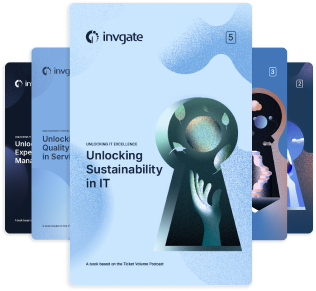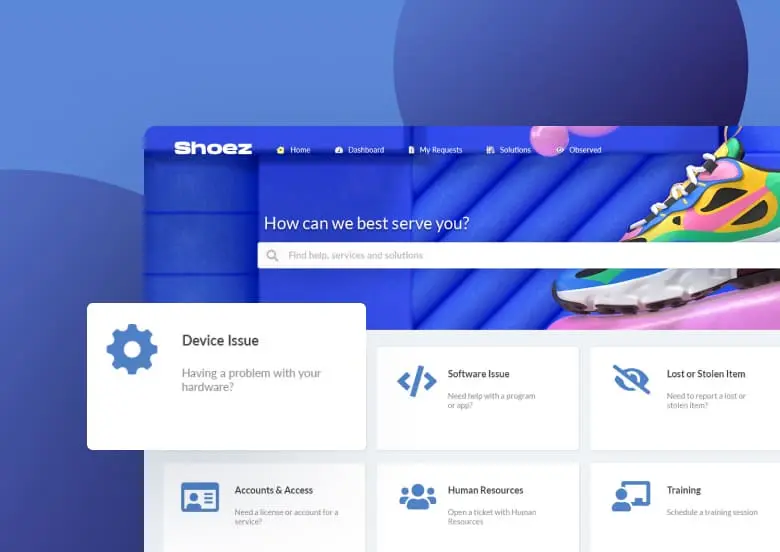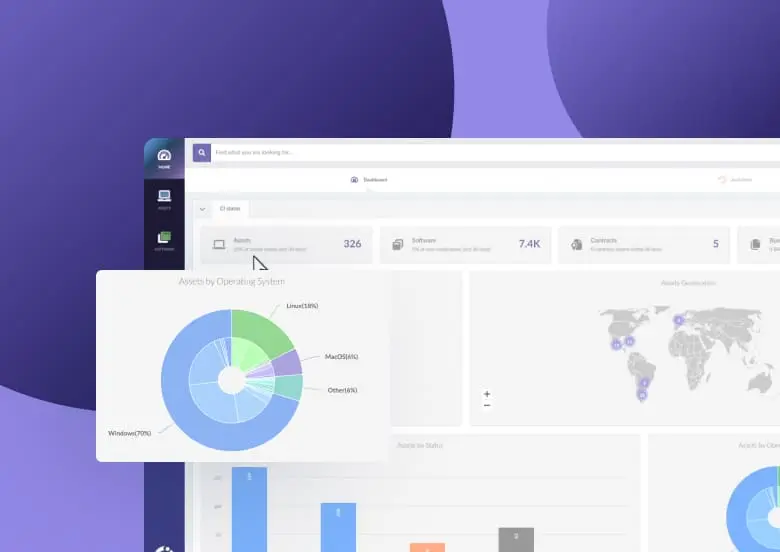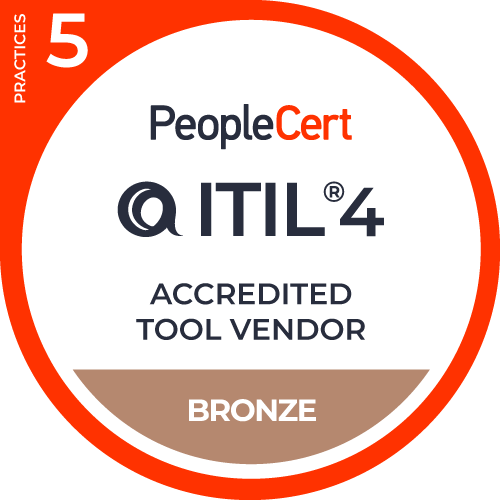IT asset recovery may seem like a final, simple step in managing IT equipment, but it’s actually a very important step for a robust Asset Management strategy.
Often overlooked in favor of high-profile IT asset lifecycle stages like procurement and deployment, asset recovery plays a pivotal role in balancing costs, sustainability, and Risk Management.
This guide explores the ins and outs of IT asset recovery, its importance, and actionable insights to help organizations recapture value effectively and responsibly.
What is IT asset recovery?
IT asset recovery refers to the systematic process of retrieving, evaluating, and redistributing or disposing of IT assets that are no longer in active use.
This process ensures that companies recover as much value as possible from assets while complying with environmental regulations and data security policies.
In the context of IT Asset Management, asset recovery closes the lifecycle loop, allowing organizations to redeploy, resell, or recycle equipment, helping reduce overall IT costs and environmental impact.
Key objectives of IT asset recovery
The core objectives of IT asset recovery are to:
- Reclaim value from assets that are no longer required.
- Support sustainability by responsibly handling electronic waste.
- Ensure data security through regulated disposal and data destruction.
- Facilitate efficient redeployment within the organization.
For example, a company might retrieve laptops from employees who have upgraded to newer models. These devices can then be refurbished and reassigned to other employees or sold to recapture value.
The role of IT asset recovery in the IT asset lifecycle
The IT asset lifecycle includes several stages, from planning and procurement to deployment, maintenance, and, ultimately, retirement. Recovery is the final stage in this lifecycle, where devices and equipment that are no longer in use are either disposed of, recycled, or repurposed.
Integrating asset recovery into the lifecycle is key to maintaining a sustainable Asset Management strategy. It supports resource optimization by keeping the lifecycle circular, reintroducing viable assets back into the business where possible, and responsibly handling those that have reached their end of life.
For organizations aiming to improve efficiency and reduce waste, aligning recovery processes with broader IT Asset Management (ITAM) practices can offer long-term benefits.

IT Asset Lifecycle Management: The 9 Stages to Manage Your IT Assets
Importance and benefits of IT asset recovery
IT asset recovery provides more than just financial returns. Let’s break down the main benefits:
Data security compliance
Secure data disposal is an integral part of the asset recovery process. When organizations fail to sanitize devices before disposal properly, unauthorized individuals can recover residual data. Reports have shown that sensitive information is often found on retired assets, leading to potential data breaches that can result in financial loss and reputational damage.
Moreover, data breaches can lead to severe legal consequences, including hefty fines under regulations like GDPR and HIPAA, which mandate strict data protection measures. The NIST 800-88 standard includes best practices for data sanitization.
Maintaining a documented chain of custody is crucial. Any lapses in this process can lead to unauthorized access or loss of data integrity during asset recovery
Organizations can implement procedures to ensure that data-bearing assets undergo certified data destruction before being resold or recycled.
Sustainability and environmental responsibility
E-waste has become a significant environmental concern. In 2022, approximately 62 million tonnes of e-waste were generated worldwide. Alarmingly, only 22.3% of this was formally collected and recycled
Asset recovery helps minimize this impact by recycling and refurbishing devices, which reduces landfill contributions.
Reusing and refurbishing devices aligns with sustainability goals, offering organizations a way to demonstrate corporate social responsibility.
Unlocking Sustainability in IT
Discover the importance of embracing sustainability in IT.
Download for free
Cost savings and ROI
Recovering assets can help offset new equipment costs and reduce total IT expenditure. Organizations can reclaim substantial value by selling, redeploying, or even renting out unused assets.
For example, a company could sell older servers to offset the cost of upgrades rather than simply discarding them.
IT asset recovery vs. disposal: understanding the difference
IT asset recovery and disposal might seem similar, but they serve distinct functions within the asset lifecycle.
Asset recovery focuses on retrieving and maximizing the value of IT assets that are no longer actively used. IT asset disposal (ITAD), on the other hand, is the final phase in Asset Management for items that have no further value to the organization, and it typically involves recycling or responsible destruction.
Key distinctions:
- IT asset recovery aims to assess, reclaim, and potentially repurpose or resell assets. This process includes retrieval, inspection, and a thorough data sanitization process to enable safe reuse.
- IT asset disposal is the environmentally compliant destruction or recycling of assets that are damaged, outdated, or have no resale value. It’s essential for meeting regulatory requirements around e-waste and hazardous material handling.

Mastering ITAD: A Guide to Secure IT Asset Disposition
The IT asset recovery process: key steps
To implement a successful IT asset recovery program, organizations should follow a structured approach that prioritizes efficiency, data security, and regulatory compliance. Here are the essential steps:
1. Asset retrieval and identification
Asset retrieval is the first step, especially when assets are in employees' hands. This may involve collecting devices from offboarding employees or those receiving upgrades.
Policies around asset retrieval should be part of standard offboarding and equipment upgrade protocols to prevent asset loss and ensure timely recovery. Retrieving these assets can involve coordination between IT and HR to track each device’s location, user history, and current condition. Consider including this important step in your employee offboarding workflow.
2. Asset identification and assessment
Once assets are retrieved, they are cataloged and assessed to determine their condition, potential for redeployment, resale value, or recycling.
A centralized Asset Management system can assist by providing real-time data on the asset’s lifecycle, helping identify its next best use. This data includes the asset’s age, software configurations, and hardware status, enabling organizations to make informed recovery decisions.
And, of course, you can use InvGate Asset Management! It provides a centralized platform to access data on your IT assets. This includes detailed audit trails of all asset movements and assessments.
3. Data sanitization and security
Data security is paramount in IT asset recovery. Any device slated for recovery that contains sensitive or confidential information should undergo thorough data sanitization or physical destruction. Techniques like overwriting, degaussing, and physical shredding can be used based on the type of asset and regulatory requirements.

IMACD Process: Installation, Move, Add, Change, and Disposal
4. Determining asset disposition
Based on an asset's condition and value, the next step is to decide on its ultimate disposition. Options include:
- Redeployment: Refurbished assets that still meet internal standards can be reassigned within the organization.
- Resale: Assets with market value can be sold to third parties, often through IT asset disposition (ITAD) vendors.
- Recycling or disposal: Assets with no resale value are typically recycled or safely disposed of according to environmental standards.
5. Documentetion and reporting
Documenting each step of the recovery process is essential for maintaining transparency and compliance. Records should include details on data sanitization, disposition decisions, and environmental compliance for recycling efforts. This documentation supports audit requirements and provides insight into the success of recovery efforts.
6. Environmental compliance and recycling
E-waste recycling regulations vary by region, so it’s essential to understand applicable laws and work with certified e-waste recyclers.
Compliance with these regulations helps organizations avoid legal risks and demonstrates a commitment to sustainability. Proper recycling practices also align with environmental standards and reduce the organization’s carbon footprint.
Tips for optimizing IT asset recovery
Here are some best practices that can help improve the effectiveness of IT asset recovery:
- Regularly review asset lifecycle policies: Asset recovery strategies should adapt to the evolving needs of the organization. Periodic reviews can identify changes in device usage or regulatory requirements, allowing organizations to adjust policies as necessary.
- Implement a centralized Asset Management system: Using a centralized Asset Management solution enables organizations to track assets throughout their lifecycle, streamlining recovery processes and improving data accuracy.
- Partner with certified ITAD providers: Partnering with a certified IT asset disposition provider can simplify the recovery process. These vendors specialize in secure data destruction, recycling, and resale, often providing detailed reports for compliance.
- Train employees on Asset Management and recovery protocols: Educating employees on the importance of asset recovery and proper disposal procedures can foster a more sustainable IT environment. Training also reduces risk by ensuring that employees follow compliance requirements for data destruction and e-waste handling.
Future trends in IT asset recovery
As technology and regulatory demands evolve, IT asset recovery is expected to adapt in the following ways:
- Greater emphasis on sustainability: With rising awareness of e-waste issues, organizations are prioritizing eco-friendly practices. This may include setting up in-house recovery programs, reducing e-waste, and opting for environmentally responsible ITAD providers.
- Advances in data sanitization methods: Data security technologies are advancing to meet stringent regulatory demands. Expect to see more secure, efficient data destruction methods that keep pace with emerging technologies and protect sensitive information.
- AI and automation in recovery processes: Automation and AI may soon play a role in asset tracking and assessment, streamlining processes like device evaluation and reporting for more efficient asset recovery.
Conclusion
IT asset recovery is a vital part of managing IT resources efficiently, contributing to financial savings, environmental responsibility, and data security.
When embedded within the broader IT asset lifecycle, it enables a sustainable approach to IT Asset Management, extending value beyond initial use. Organizations can maximize returns on investment while promoting responsible disposal practices, ultimately leading to a more cost-effective and environmentally conscious IT strategy.
InvGate Asset Management offers tools for tracking, managing, and optimizing your assets at every stage of their lifecycle. Ask for your 30-day free trial and see for yourself!
Frequently Asked Questions
What is IT asset recovery?
IT asset recovery involves retrieving and repurposing or reselling unused or retired IT equipment to recover value and ensure secure disposal.
How does asset recovery fit into the IT asset lifecycle?
IT asset recovery is part of the final stages of the lifecycle. It involves identifying, assessing, and securely processing assets that are no longer in active use, whether for resale, reuse, or recycling.
Why is data sanitization critical in IT asset recovery?
Data sanitization is essential to protect sensitive information. Without it, assets could be resold or recycled with residual data, potentially leading to security breaches or compliance violations.
How can organizations track assets for recovery?
Asset Management software, such as InvGate Asset Management, allows organizations to track assets throughout their lifecycle, aiding in retrieval and efficient recovery processes.
How does asset recovery contribute to sustainability?
Asset recovery reduces e-waste by repurposing or recycling components, supporting environmental responsibility and sustainability.















